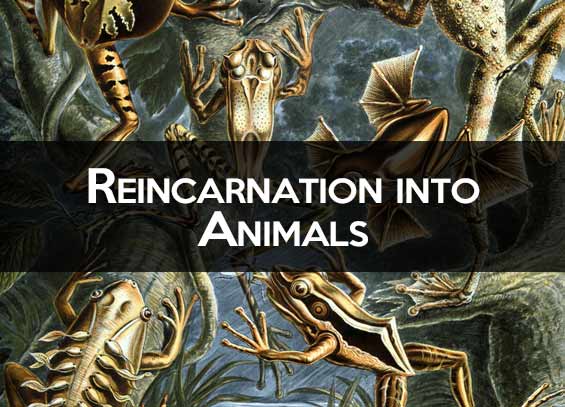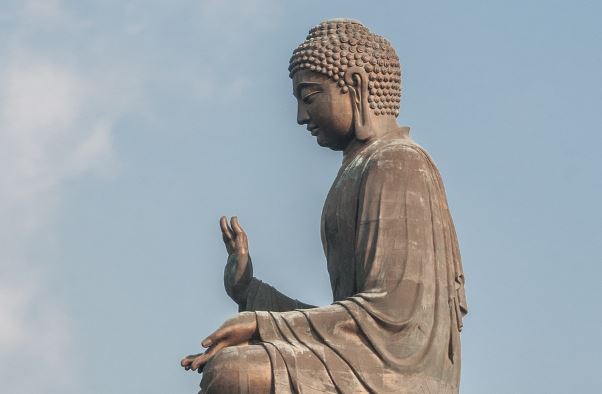Reincarnation is a concept that has been present in many cultures since antiquity. There are countries, such as India, where it is considered an irrefutable fact. It is precisely in the oriental religiosity where its most structured manifestation occurs, especially within Hinduism and Buddhism. Many African religions and some Aboriginal people of the American continent – and even in Oceania – they contemplate it as part of its cosmogony.
Can a person incarnate in an animal?

In general terms, all the notions of reincarnation coincide in the idea that the soul of a deceased person can return to live in a new body. In most cultures that accept this idea within their faith, it is considered a good thing that the soul can migrate to a more evolved species, and a negative thing to reincarnate into an inferior species. Here are some examples of this:
Metempsychosis. For the ancient Greeks, human beings are constituted by three elements: soul, spirit and body. Thinkers like Plato and Empedocles came to legitimize the idea that there are elements of the psyche that pass from one body to another after the death of a person. This notion is part of the philosophical factors that derive in Plato’s Theory of Reminiscence, which enunciates the idea that to acquire knowledge it is necessary to remember what our soul already knew before inhabiting the sensible world. Often the term is mistakenly translated as reincarnation, but there is a significant difference: it is assumed that the human soul does not regress and can never, for example, return to this world in animal form.
Transmigration. This concept lies in the belief that there is a change of state that excludes the idea of a return to a level that has been overcome. Unlike metempsychosis, which believes it possible to return to the sensitive world as animal, vegetable and even mineral, transmigration involves the real being and its evolution of state. It goes far beyond the inheritance of elements of the psyche of a deceased: it is the evolution of the state of being. And the differences with respect to reincarnation are that transmigration has to do with the states of being, not simply the return to the human state. The transmigration is mentioned doctrinally in the Upanishad, texts after the ancient Vedas.
Rebirth. This concept was reformulated by Buddhism from the wisdom of Hinduism where it was founded. It is based on not affirming the existence of an enduring soul capable of transmigrating. Many scholars have linked this view with the modern logic of DNA because it denies that there is something permanent in the human being able to use other bodies. So it is causes and effects of karma that order life and not the soul. In this way, when a being reappears, it is by a matter linked to karma: the universal mechanism of cause and effect that relates directly to the actions accomplished in the life of that being. That makes rebirth not a desired goal: the whole spiritual path of Buddhism is conceived so that each person can be freed from an eternity of causes and effects. That is to say: each one lives what he must live and each one is responsible for the decisions that allow him to free his spirit.
Metensomatosis. A possible translation of this word would be “displacement of the body” or “removal of the body”. According to this idea, the body reincarnates in another body as in the basic concept of reincarnation, only stating that this new body will incorporate elements of the former. It is a matter of passing from one body to another, not a soul moving to a body and giving rise to a new life. This notion practically nullifies the existence of the spirit, so the traces that could be perceived by another human being of the previous being when having contact with the new body have no link with the spirit.

Palingenesis. The etymology behind this concept is clear: palin translates “again” and “genesis” the idea of being born. The approach, however, is not so simple: it states that every living thing has a cycle of existence that is fulfilled from birth to reincarnation as a process after death. In many cases, it appears as the idea of “eternal recurrence”, because the differentiating value of this notion is that it ensures the continuity of beings in an infinite process of reincarnations and rebirths. Although for many it is a parallel doctrine to the idea of reincarnation, palingenesis does not consider the possibility that the spirit reaches a sublime level that frees it from the task of returning to the Earth reincarnating. A representation capable of explaining it symbolically would be the myth of the Phoenix. This concept managed to inspire to Arthur Schopenhauer part of its affirmation of the will as a factor that does not die but that it manifests itself again and in new individuals.
Only the variants of Christianity, Judaism, and Islam do not contemplate reincarnation as a possibility and even condemn it, despite the fact that in some cases a similar idea is considered: the resurrection. However, to consider that in the most populous countries – China and India – do believe in reincarnation makes it a cultural and dogmatic phenomenon with planetary dimensions that surpass the concepts of the Western world.
According to the Kabbalah, the soul never incarnates in an animal. It is also not linked to the plant level or the mineral level. The soul only incarnates on the level of human. So how is it that in some Kabbalah texts people are told that their souls have reincarnated in animals? The answer is simple:
Already at the beginning of Baal haSulam’s writing – “Preface to the Book of Zohar” (Chapter 5), it is written that all Kabbalistic writings refer only to the characteristics of human souls. In other words, all the original writings of Kabbalah where the terms “mineral,” “vegetable,” “living,” or “speaker,” are spoken of refer only to the interiority of the human soul. In these books, these concepts describe the different levels of development. And therefore, when the Kabbalists write that the soul of man reincarnates in an animal, its intention is to teach the reader that the same soul passes from one level of development to another. (In order to go deeper into the subject, read the article “The Essence of the Wisdom of Kabbalah” in the Talmud of the Ten Sephirot, Part I – “Internal Observation”).
These are some of the multiple derivations of the idea of the soul changes, conceived from different glances of the world. In contrast to the number of points in common, the clearest point of disagreement apparently lies in the idea of whether the soul of a human being evolves to another plane, whether it returns to the Earth in human form to a higher spiritual level or whether you can do it in other life forms like plants or animals. In the end, the conclusions about the divine are a mixture of cultural context and faith.






